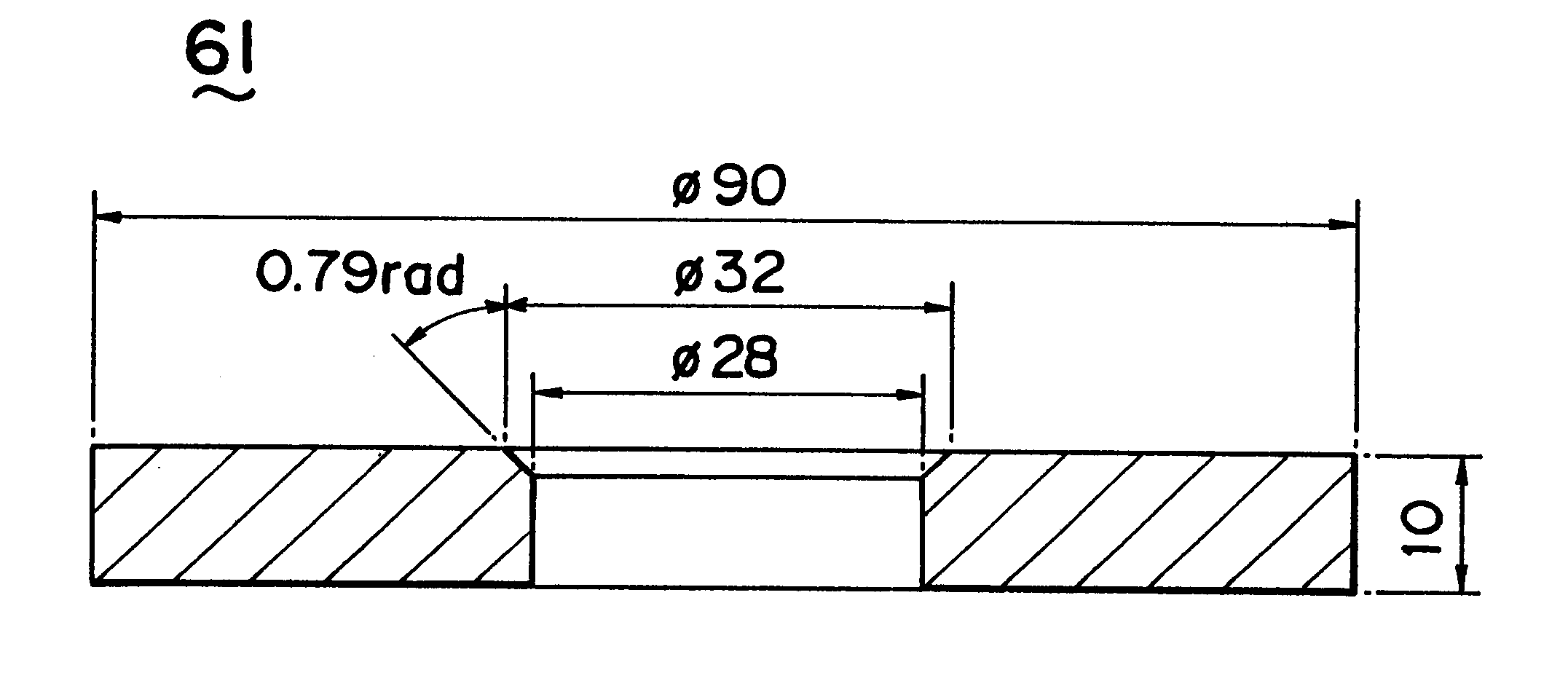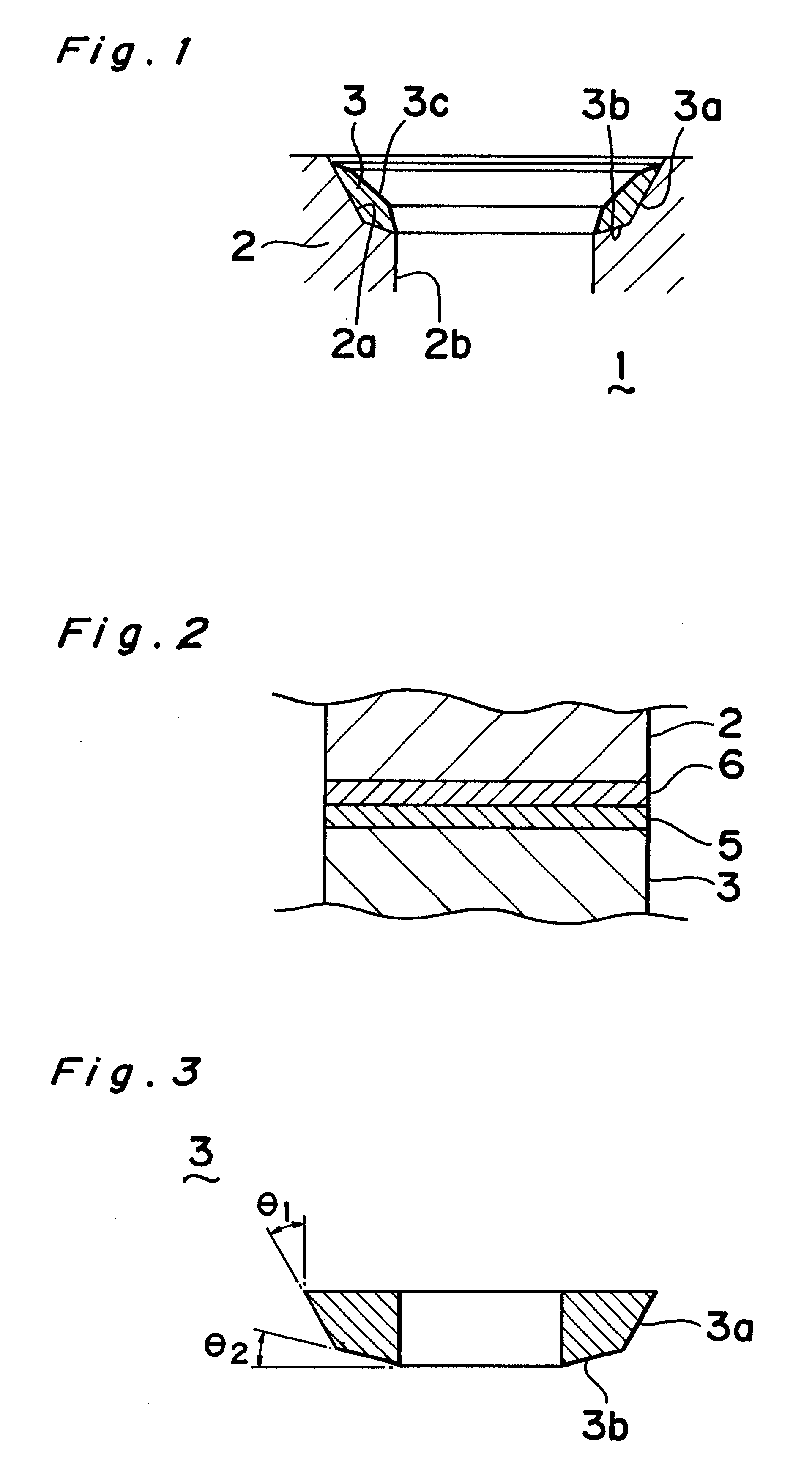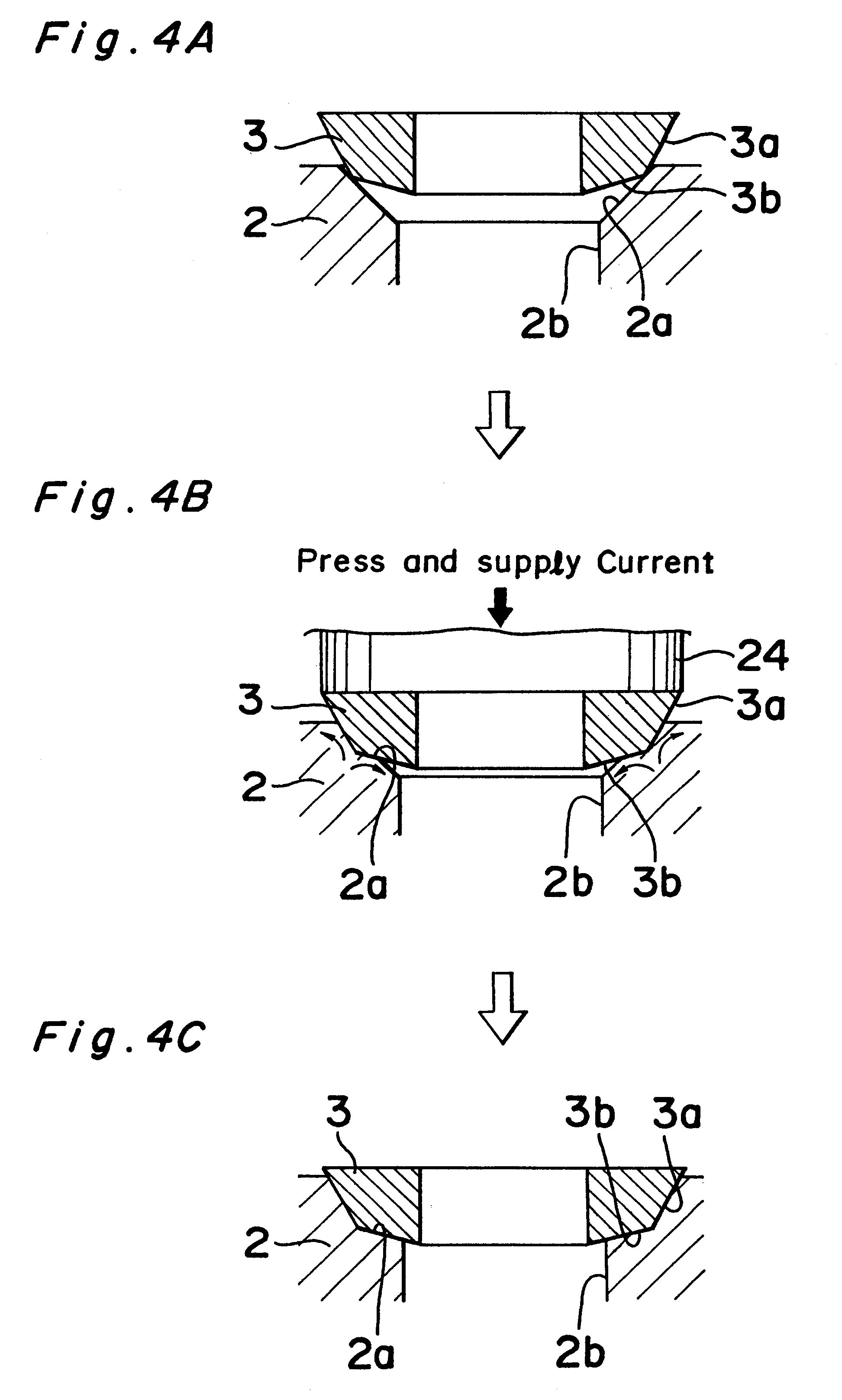Joined metal member and method of joining said member
- Summary
- Abstract
- Description
- Claims
- Application Information
AI Technical Summary
Benefits of technology
Problems solved by technology
Method used
Image
Examples
embodiment 5
FIG. 36 shows a microphotograph (magnified about 10,000 times) of the joining surfaces of the valve seat and the test piece 61 after joining in The valve seat (including the portion appearing white) is shown on the left-hand side and the test piece 61 on the right-hand side in this photograph. The diffusion-joined layer and the molten reaction layer are shown in the gray portion in-between. It can be seen that both layers are about 1 .mu.m thick. Element analysis showed that these layers included Fe, Zn and Al.
Effect of the pressure was studied more closely as follows. The valve seat was joined to the test piece 61 with pressures of 9807 N (1000 kgf), 14710 N (1500 kgf) and 29420 N (3000 kgf) while the method of coating with the brazing material, seat shape and the taper angle .theta.1 were set similarly to Basic Examples 4, 5. Then the knock-off load was measured similarly to the first knock-off load measuring test.
Hardness was measured on the test pieces 61 subjected to the press...
PUM
| Property | Measurement | Unit |
|---|---|---|
| Fraction | aaaaa | aaaaa |
| Fraction | aaaaa | aaaaa |
| Fraction | aaaaa | aaaaa |
Abstract
Description
Claims
Application Information
 Login to View More
Login to View More - R&D
- Intellectual Property
- Life Sciences
- Materials
- Tech Scout
- Unparalleled Data Quality
- Higher Quality Content
- 60% Fewer Hallucinations
Browse by: Latest US Patents, China's latest patents, Technical Efficacy Thesaurus, Application Domain, Technology Topic, Popular Technical Reports.
© 2025 PatSnap. All rights reserved.Legal|Privacy policy|Modern Slavery Act Transparency Statement|Sitemap|About US| Contact US: help@patsnap.com



